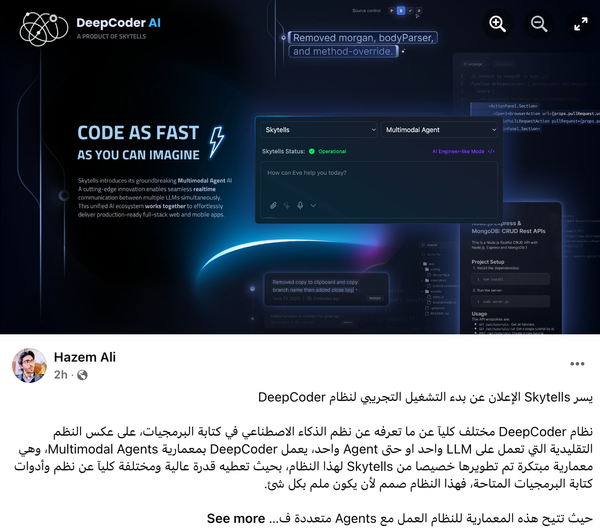Julia Language: A Hidden Gem for Data Science and Data Engineering
Table of Content
Julia is a high-level, high-performance programming language developed specifically for numerical and scientific computing. Launched in 2012, it combines the ease of use of Python with the speed of C. Julia's design revolves around performance, with a just-in-time (JIT) compiler, allowing it to execute code efficiently.
While Julia may not be the first choice for desktop and web application development, it certainly possesses the tools and libraries necessary for these tasks. With its high-performance capabilities and an expanding ecosystem, Julia can be a viable option for building both desktop and web applications, especially when performance and numerical computation are key requirements.
It can be used to develop desktop applications using the GTK or Qt frameworks, as well as web apps using several Julia-based frameworks to create dynamic, interactive websites. Julia supports WebSockets out of the box, as well as many web protocols, without the need for additional libraries.

Why Julia for Data Science and Data Engineering?
Speed and Performance
Julia's speed is one of its most significant advantages. The language is designed to handle heavy computational tasks quickly, making it ideal for data-intensive operations.
Ease of Use and to Learn
Despite its performance capabilities, Julia remains accessible and straightforward. Its syntax is user-friendly, closely resembling that of Python and MATLAB, which makes it easier for newcomers to pick up.
Rich features Set, Ready for data science and AI
- Multiple Dispatch
- Dynamic Typing
- Comes with a built-in Package Manager (Pkg)
- Supports Metaprogramming
- Parallel and Distributed Computing
- Interoperability with C, Python, R
- Rich Ecosystem
- Comprehensive Standard Library
- Automatic Differentiation
- Unicode Support
- Rich Debugging Tools
- Documentation and Help System
- WebSocket and Web Protocol Support
- Graphical Capabilities
Supports Multiple Dispatch
Julia's multiple dispatch system allows for more efficient code execution and simpler syntax. This feature means functions can be defined for different combinations of argument types, leading to more readable and efficient code.
Rich Libraries and Tools
Julia boasts a growing ecosystem of libraries tailored for data science and engineering. Notable ones include:
- DataFrames.jl: For data manipulation and analysis.
- Flux.jl: A powerful machine learning library.
- DifferentialEquations.jl: For solving differential equations.
- TensorFlow.jl: Integration with TensorFlow for deep learning.
Integration with Other Languages
Julia easily integrates with languages like Python, R, and C. This interoperability allows data scientists and engineers to leverage existing codebases and libraries without having to rewrite everything from scratch.
Ecosystem and Community
Ecosystem:
Julia's ecosystem, though not as extensive as Python's or R's, is expanding rapidly. The package manager, Pkg, is robust and makes installing and managing libraries straightforward. The JuliaHub platform provides a centralized repository for finding and sharing packages.
Community:
The Julia community is vibrant and supportive. With active forums, mailing lists, and regular conferences like JuliaCon, users can find help and collaborate on projects. The community's collaborative spirit fosters a culture of sharing and continuous improvement.
Notable Success Stories
1. Celeste
Celeste is a project by researchers at UC Berkeley to create a comprehensive sky map using data from the Sloan Digital Sky Survey (SDSS).
Julia was chosen for its speed and efficiency in handling large-scale astronomical data. The project achieved significant performance gains, processing petabytes of data in record time, demonstrating Julia's capability in high-performance computing environments.
2. Pumas
Pumas is a pharmaceutical modeling and simulation software developed by Pumas-AI. It is used for quantitative analysis in drug development, particularly in pharmacometrics.
Julia's speed and accuracy are critical in this context, allowing for faster and more reliable simulations. The adoption of Julia in Pumas has led to substantial improvements in the efficiency of drug development processes.
3. Climate Modeling Alliance (CliMA)
The Climate Modeling Alliance, a collaboration between Caltech, MIT, and the Naval Postgraduate School, uses Julia to develop next-generation climate models.
Julia's performance and ease of use enable researchers to build complex models that can run efficiently on supercomputers. This initiative aims to improve the accuracy of climate predictions and inform better policy decisions.
4. Aviva
Aviva, a major insurance company, uses Julia for risk modeling and simulations. The language's performance allows Aviva to run complex actuarial models faster and more efficiently than with traditional tools.
This capability helps the company better assess risks and make more informed decisions, leading to improved business outcomes.
5- BlackRock
BlackRock, one of the world's largest asset management firms, leverages Julia for quantitative finance and risk management. Julia's ability to handle large datasets and perform complex calculations quickly is invaluable in this industry.
The language's adoption has enhanced BlackRock's ability to manage portfolios and mitigate financial risks effectively.
Why Julia Isn't Yet at the Top
Despite its strengths, Julia hasn't become the dominant language for data science and data engineering yet. Here are a few reasons:
Relative Newness: Julia is still relatively new compared to Python and R. It takes time for a language to build a large user base and extensive library ecosystem.
Library Maturity: While Julia's libraries are growing, they aren't as mature as those in Python or R. Some functionality might still require reliance on these more established languages.
Adoption in Industry: Industry adoption of new languages can be slow. Many organizations have invested heavily in Python or R, making a switch to Julia a significant undertaking.
Final Note
Julia is a powerful language that offers a compelling blend of speed and ease of use for data science and data engineering. Its expanding ecosystem and supportive community make it a strong contender for those looking to handle complex, data-intensive tasks.
While it hasn't yet reached the top of the data science and engineering hierarchy, its continued growth and development suggest it could become a major player in the near future. If you're looking for performance and productivity, Julia is definitely worth exploring.
Julia has been downloaded over 45 million times, with over 10,000 community-registered packages. These include mathematical libraries, data tools, and general-purpose packages. Additionally, Julia easily integrates with Python, R, C/Fortran, C++, and Java libraries.
Resources













